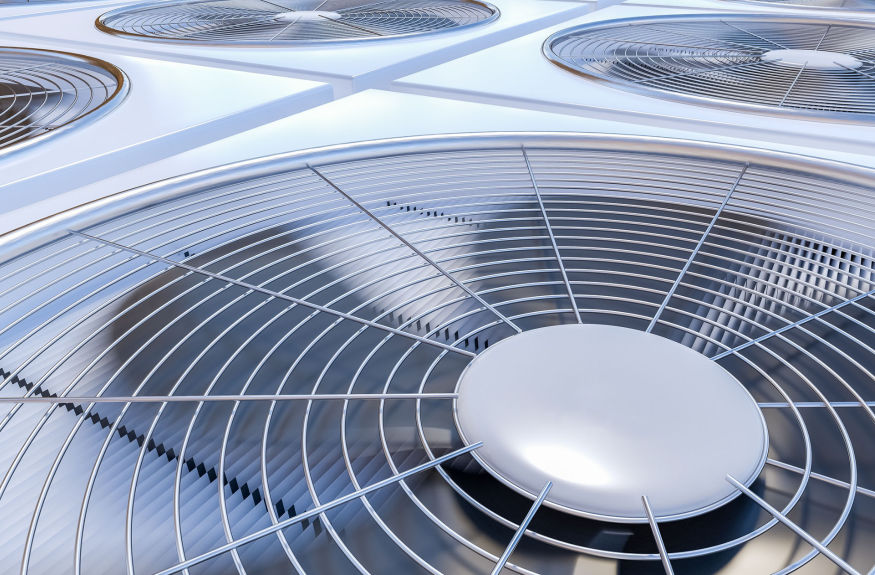Enhancing Indoor Air Quality in CRE
Indoor air quality (IAQ) has emerged as a major driver in commercial real estate (CRE), both from tenants and staff. Given the substantial amount of time people spend indoors, particularly in office environments, maintaining superior air quality is essential for occupant health, productivity, and overall comfort. Consequently, the responsibility to provide occupants with clean, healthy air is both significant and challenging.
The application of innovative, efficient technologies can dramatically improve indoor air quality in commercial settings, driving benefits for both building occupants and property owners or managers. By understanding the potential of these technologies, commercial real estate professionals can make informed decisions to enhance their buildings’ IAQ and meet the requirements of CRE certifications such as the WELL Building Standard and Fitwel.
Air Purification Systems
Air purification systems are designed to remove pollutants, allergens, and other harmful particles from indoor air. These devices use various technologies, such as High-efficiency particulate air (HEPA) filters, activated carbon filters, and Ultraviolet germicidal irradiation (UVGI), each with their own unique capabilities and applications.
HEPA filters capture particles as small as 0.3 microns, effectively removing dust, pollen, mold spores, and other allergens. They are commonly used in commercial buildings, schools, hospitals, and other facilities where maintaining high air quality is paramount. Activated carbon filters, on the other hand, absorb and remove odors, volatile organic compounds (VOCs), and other gaseous pollutants. This makes them particularly effective in environments with strong odors or high concentrations of VOCs, such as restaurants, factories, and laboratories. Lastly, UVGI systems employ UV-C light (a form of ultraviolet light with a shorter wavelength and higher penetration) to remove airborne pathogens, like bacteria and viruses. This technology is particularly useful in healthcare facilities, schools, and other settings where controlling the spread of airborne infections is crucial.
There are multiple benefits to utilizing air purification technologies in CRE. By removing pollutants, allergens, and pathogens, air purifiers significantly improve indoor air quality, reducing the risk of respiratory issues and allergic reactions among occupants. Additionally, clean and fresh air contributes to a more comfortable and pleasant environment, positively impacting occupant satisfaction and productivity. The adoption of air purification technologies can also contribute to achieving CRE certifications. WELL and Fitwel Building Standards both emphasize the importance of effective air filtration and purification, making the inclusion of air purifiers a clear choice for buildings seeking these certifications.
Smart HVAC Systems and Automated IAQ control
Heating, Ventilation, and Air Conditioning (HVAC) systems are integral to maintaining a healthy indoor environment. As technology has advanced, the emergence of smart HVAC systems has revolutionized the control and optimization of indoor air quality. These systems employ advanced sensors, controls, and algorithms to monitor and adjust HVAC systems in real-time, ensuring optimal air quality and occupant comfort.
Smart HVAC systems offer significant advantages over traditional systems. The use of advanced sensors and controls allows these systems to continuously monitor and fine-tune indoor air quality parameters, thereby maintaining a consistently healthy environment. By adjusting ventilation rates and temperature settings based on real-time data, smart HVAC systems optimize energy use, reducing energy consumption and associated costs. The integration of HVAC systems with broader building automation systems (BAS) can facilitate improved control and monitoring, leading to more efficient management of building systems and easier tracking of performance metrics.
The implementation of advanced HVAC systems aligns with the requirements and recommendations of the WELL Building Standard and Fitwel. Both programs recognize the importance of high-performing HVAC systems in maintaining superior indoor air quality and promoting a healthy indoor environment. By investing in smart HVAC technologies, commercial real estate professionals can enhance their buildings’ IAQ while also moving closer to achieving these certifications.
Bipolar Ionization Technologies
Another effective method for enhancing IAQ is bipolar ionization. This technology generates positive and negative ions that attach to airborne particles, increasing their size and thus making them easier for air filters to capture. These ions can neutralize harmful compounds and microorganisms, including VOCs and pathogens such as bacteria and viruses, further improving air quality and reducing the risk of illness among building occupants.
Bipolar ionization presents several benefits for commercial real estate professionals. Bipolar ionization enhances air filtration efficiency, making it easier for air filters to capture and remove pollutants. It also neutralizes harmful compounds and pathogens, reducing the risk of disease spread within the building. Bipolar ionization can also be integrated with HVAC systems, enhancing air filtration efficiency without significantly increasing energy consumption.
Demand-Controlled Ventilation
Demand-controlled ventilation (DCV) systems are another innovative approach to enhancing IAQ. These systems utilize sensors to measure key indoor air quality parameters, such as CO2 levels, and adjust ventilation rates accordingly. By providing the right amount of fresh air based on actual demand, DCV systems can significantly improve indoor air quality while reducing energy consumption.
The benefits of DCV are considerable. These systems optimize ventilation rates based on actual demand, maintaining optimal indoor air quality while minimizing energy waste. This approach can lead to substantial energy savings, lower utility bills, and a reduced carbon footprint. Moreover, by maintaining ideal air quality conditions, DCV systems can enhance occupant comfort and well-being.
Enhancing Indoor Air Quality
Indoor air quality has proven to be a major driver for both tenants and staff at CRE properties. By understanding and implementing efficient technologies such as air purifiers, smart HVAC systems, bipolar ionization, and demand-controlled ventilation, CRE professionals can significantly improve indoor air quality while reducing energy consumption and add significant value at their properties. These systems provide a healthier and more comfortable environment for building occupants and bring a property ever closer to achieving CRE certifications like WELL and Fitwel. All occupants of a building benefit from IAQ enhancements and investing in these technologies today can add significant value to your property.
To stay up to date on news and resources such as this and other topics of importance to the real estate industry, subscribe to the free CRE Insight Journal Newsletter using this link.









